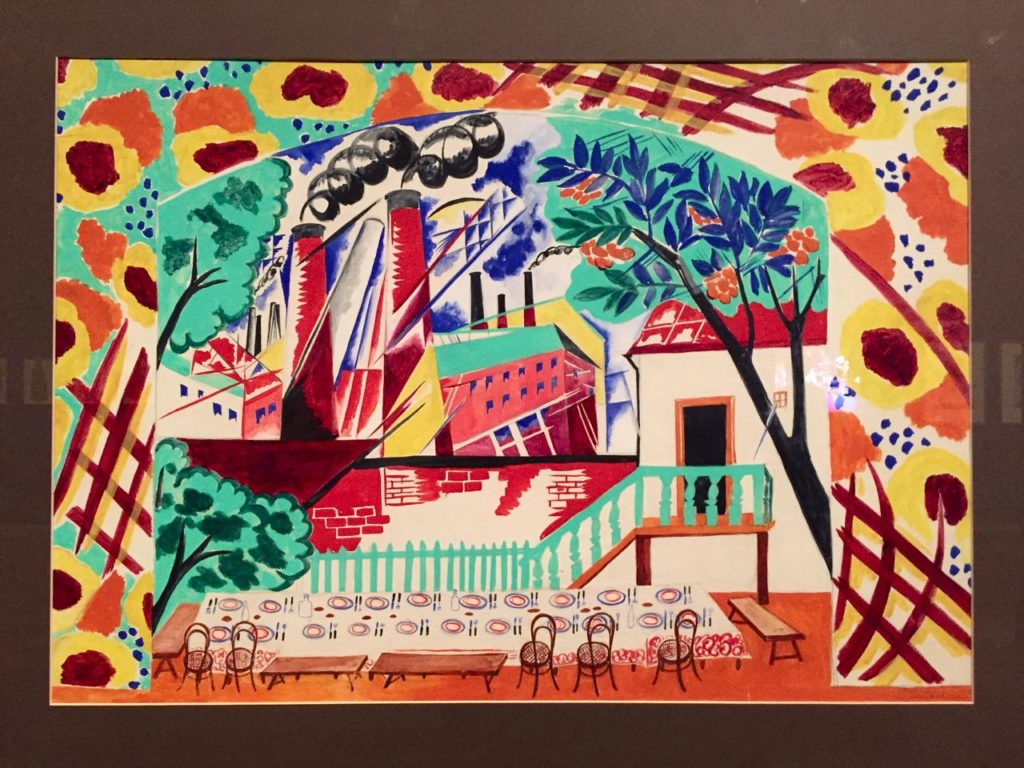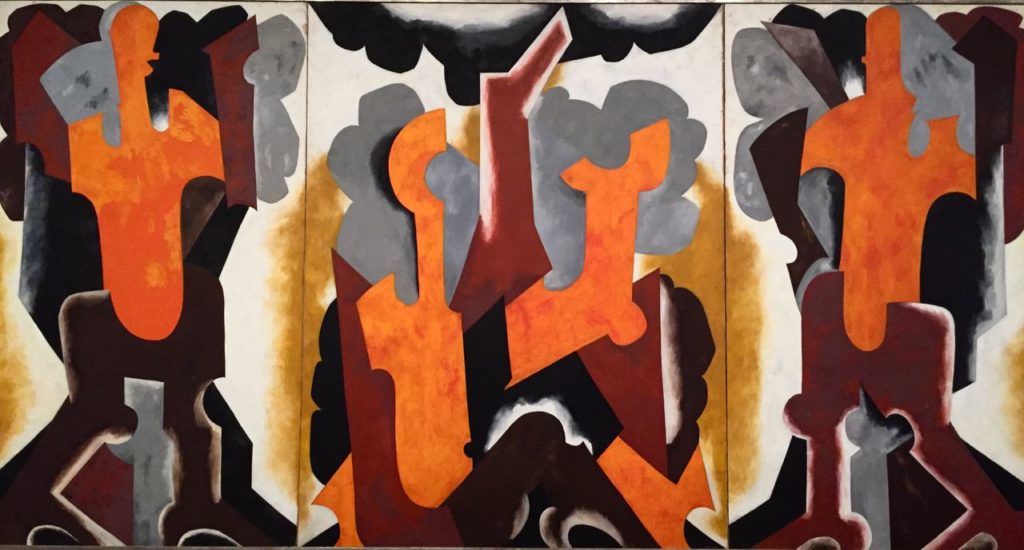In the words of the Tate modern:
« A leader of the Russian avant-garde, Natalia Goncharova blazed a trail with her experimental approach to art and design.
Goncharova found acclaim early in her career. Aged just 32 she established herself as the leader of the Russian avant-garde with a major exhibition in Moscow in 1913. She then moved to France where she designed costumes and backdrops for Sergei Diaghilev’s Ballet Russes. She lived in Paris for the rest of her life, becoming a key figure in the city’s cutting-edge art scene.
Goncharova’s artistic output was immense, wide-ranging and at times controversial. She paraded the streets of Moscow displaying futurist body art and created monumental religious paintings. She took part in avant-garde cinema, experimented with book designs and designed for fashion houses in Moscow and Paris.
Her bold and innovative body of work influenced and transcended the art movements of the 20th century. The exhibition will explore her diverse sources and inspirations, from Russian folk art and textiles to the latest trends in modernism and beyond. »
One wonders why this artist is unknown to the world? Maybe because she happens to be a women? Well, thanks to the Tate for bringing her talent back to the light, it’s about time!
The exhibition starts, with all things, by a beautiful carved piece of wood for block printing, and a piece of fabric in negative print, part of the traditional costumes of the time. So close to my present researches in traditional fabric dyeing and pattern creations… how not to love it?!
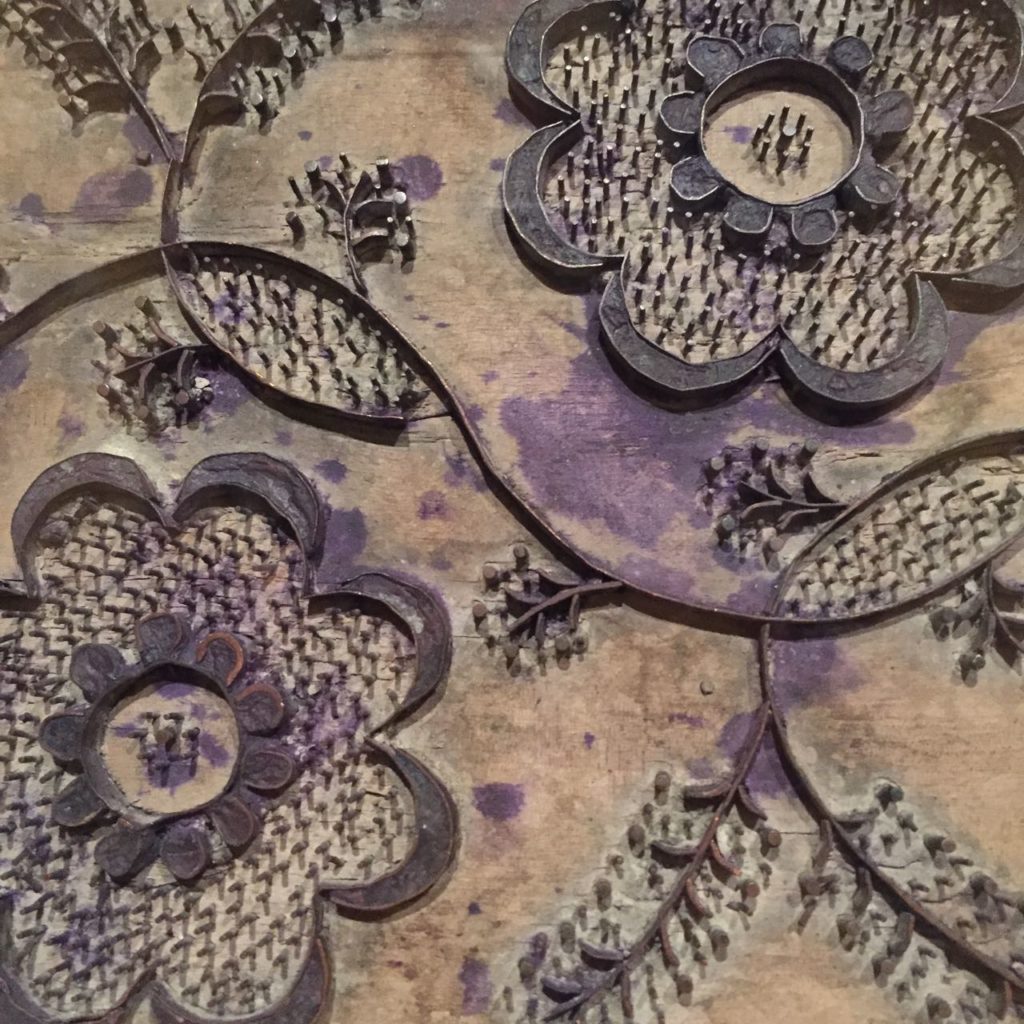
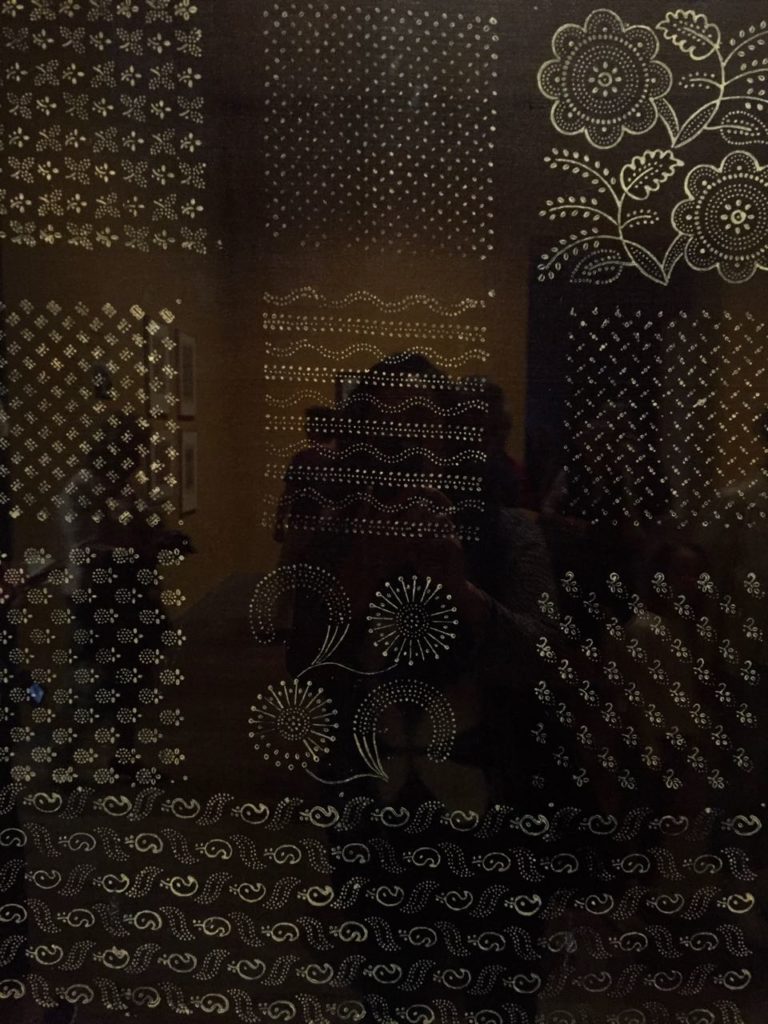
Costume from Tula province
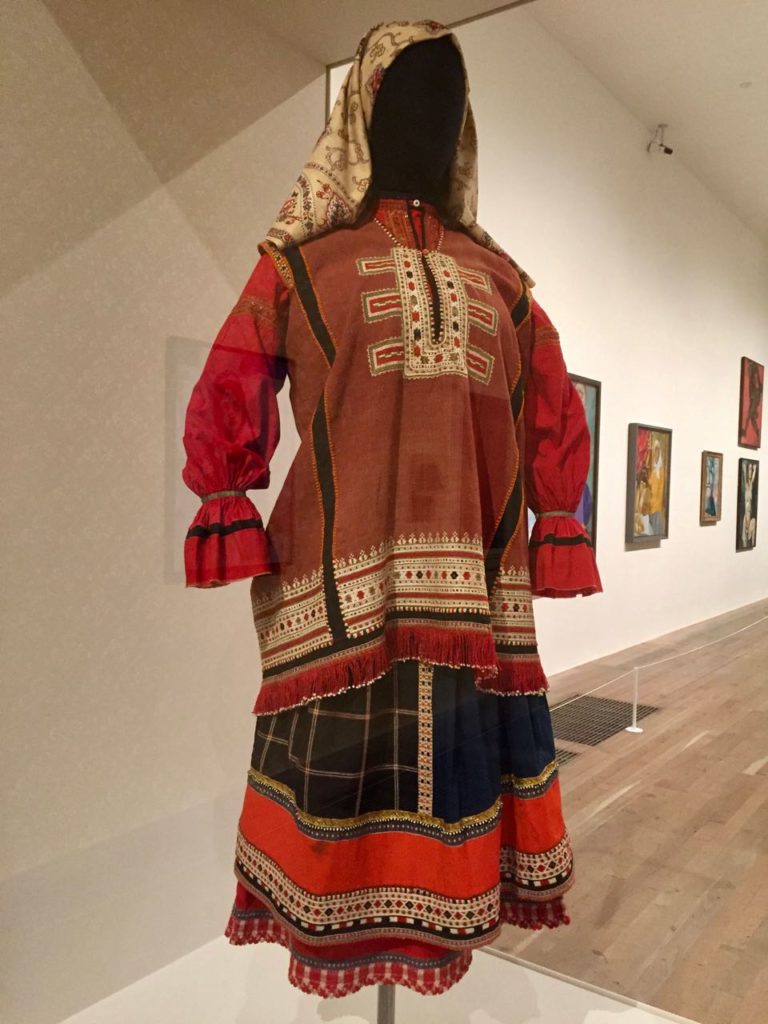
Peasant woman from Tula province

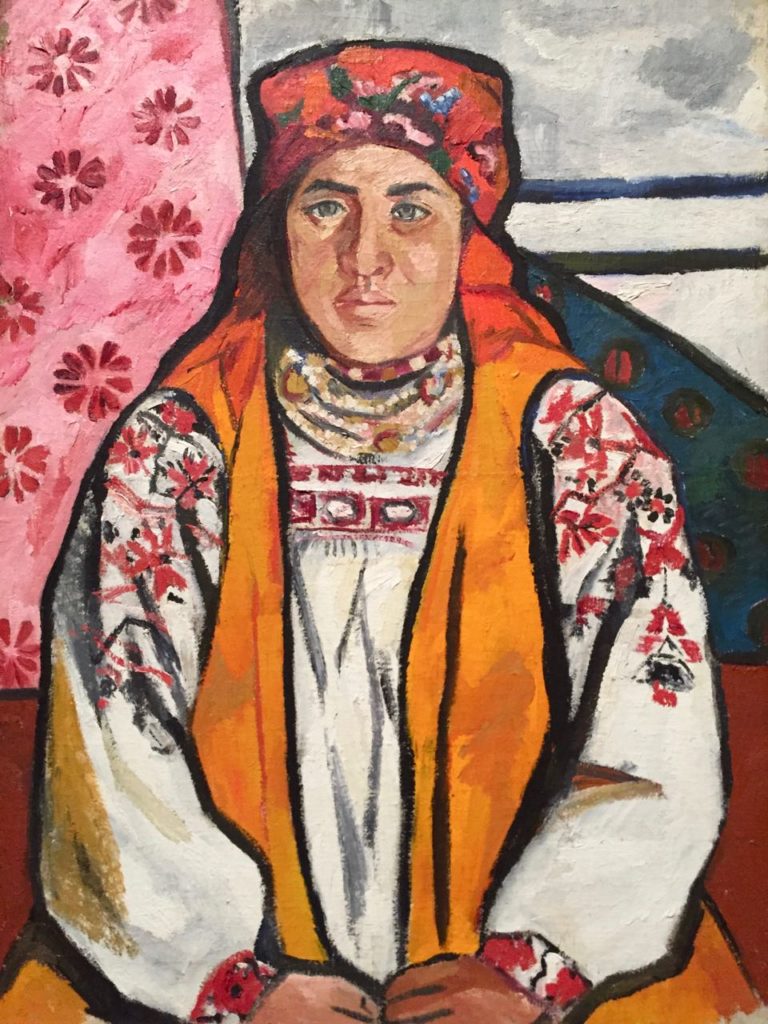
Peasant picking apples, 1911
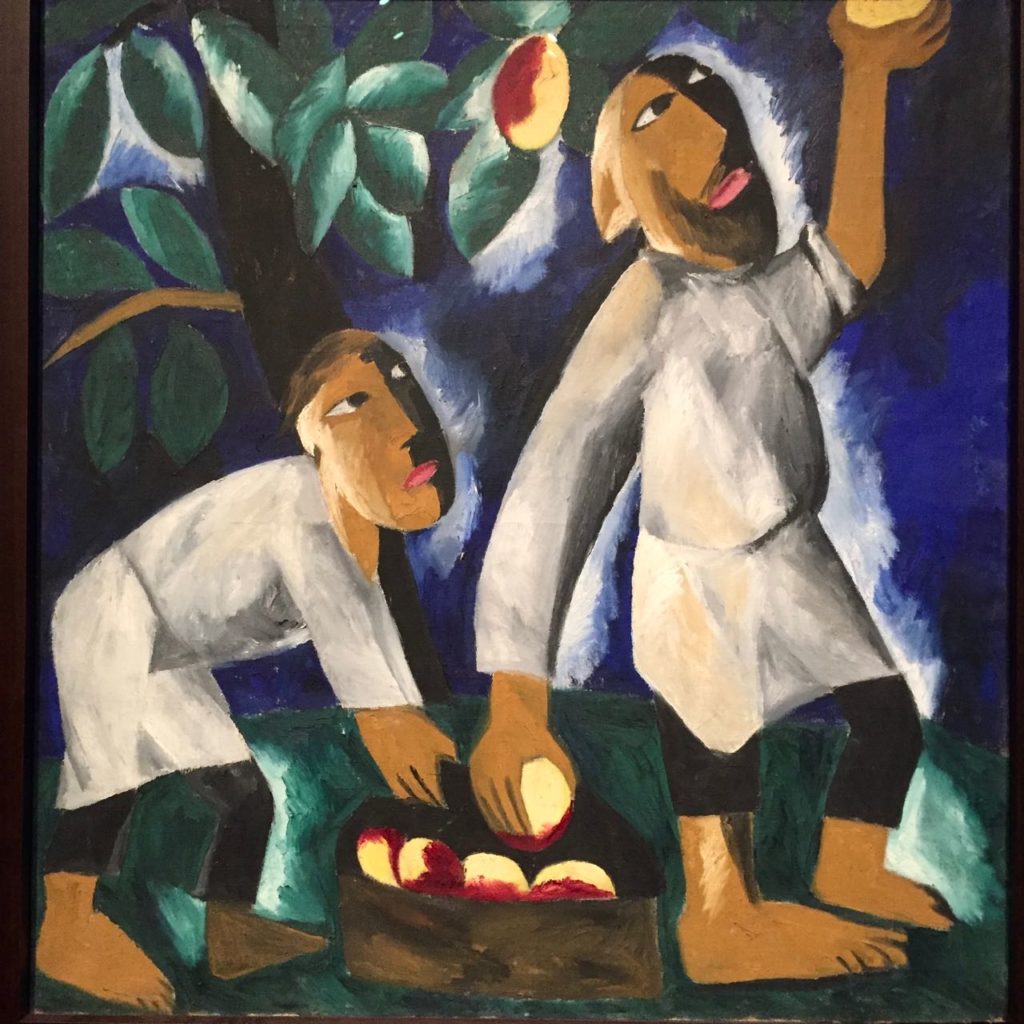
Harvest, 1991, was designed as a 9 canvas piece, two of them are lost. An echo of the frescoes in Russian medieval cathedrals, it relates to imagery of the Bible.
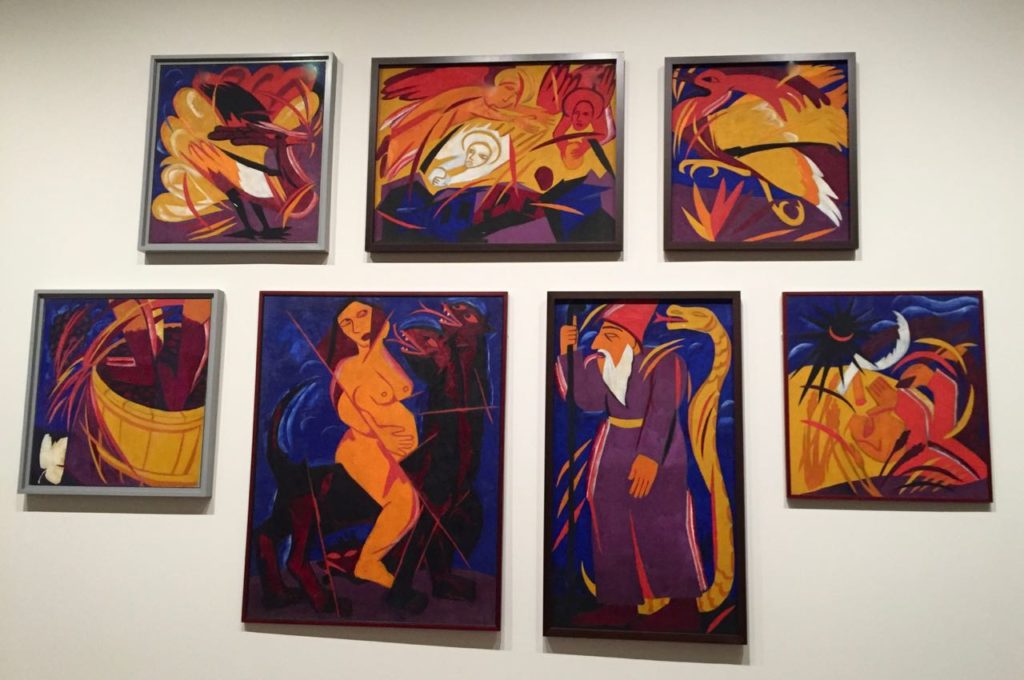
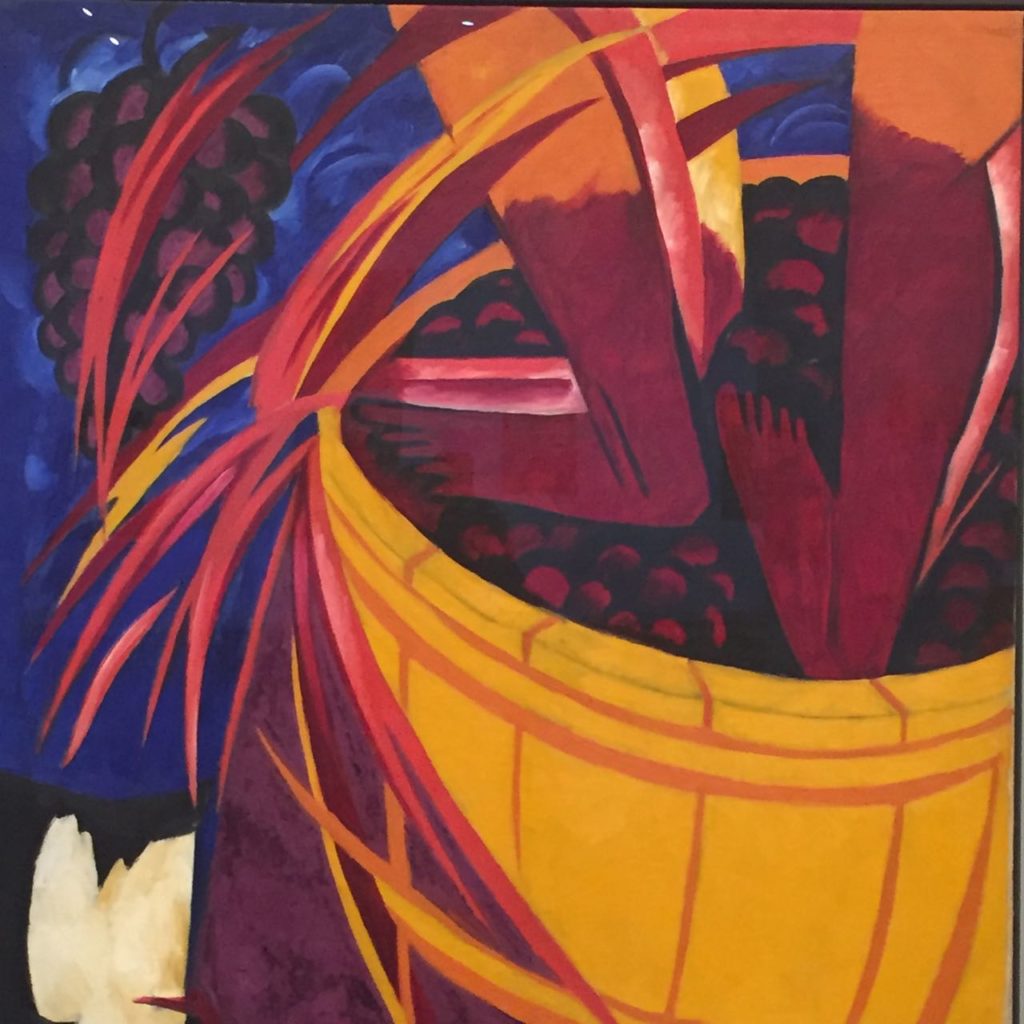
A model, 1909-10
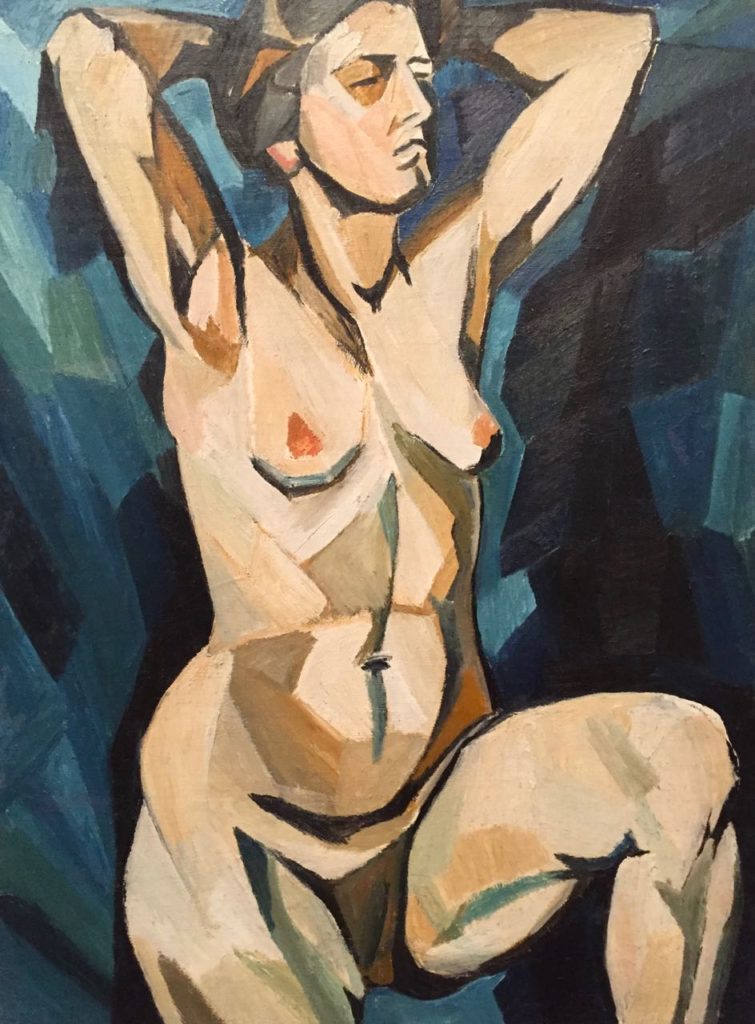
Winter, gathering firewood, 1911
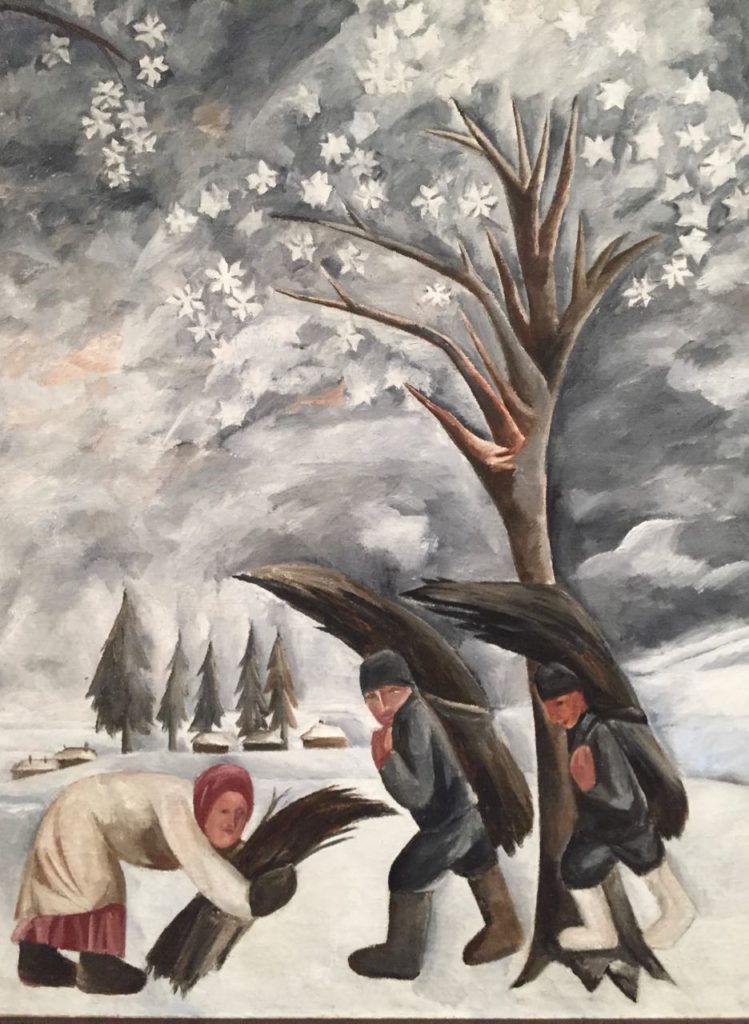
A smoker, 1911
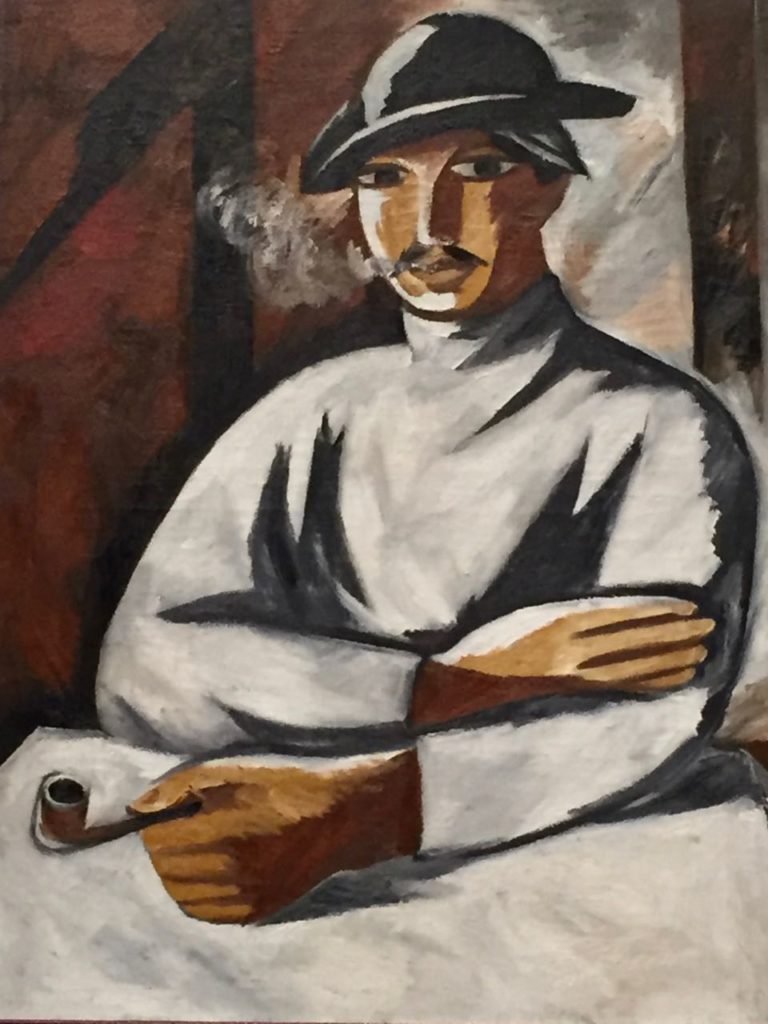
Frost, 1010-11
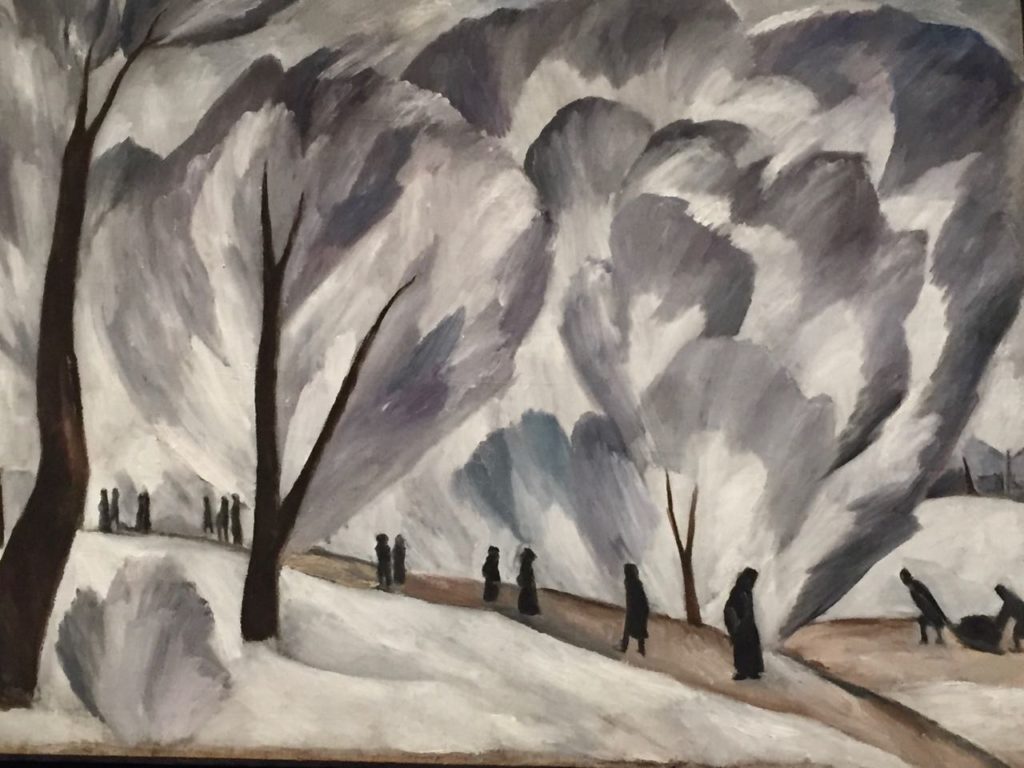
Textile designs for Lamanova fashion house and House of Myrbor
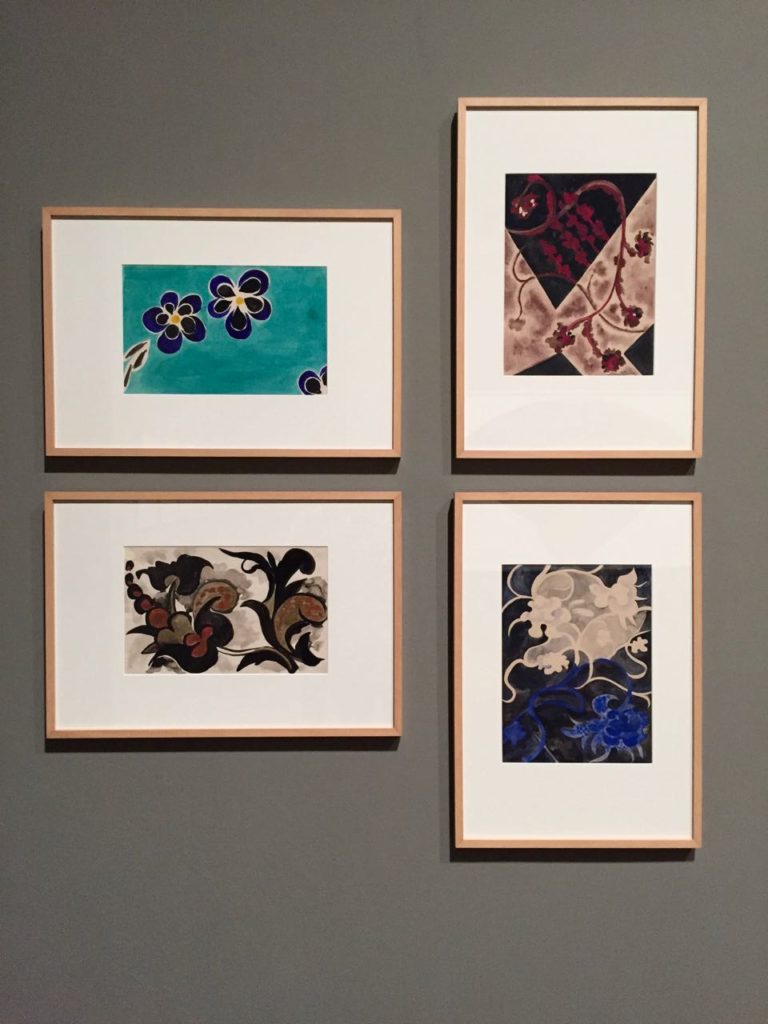
Textile design 1925-28
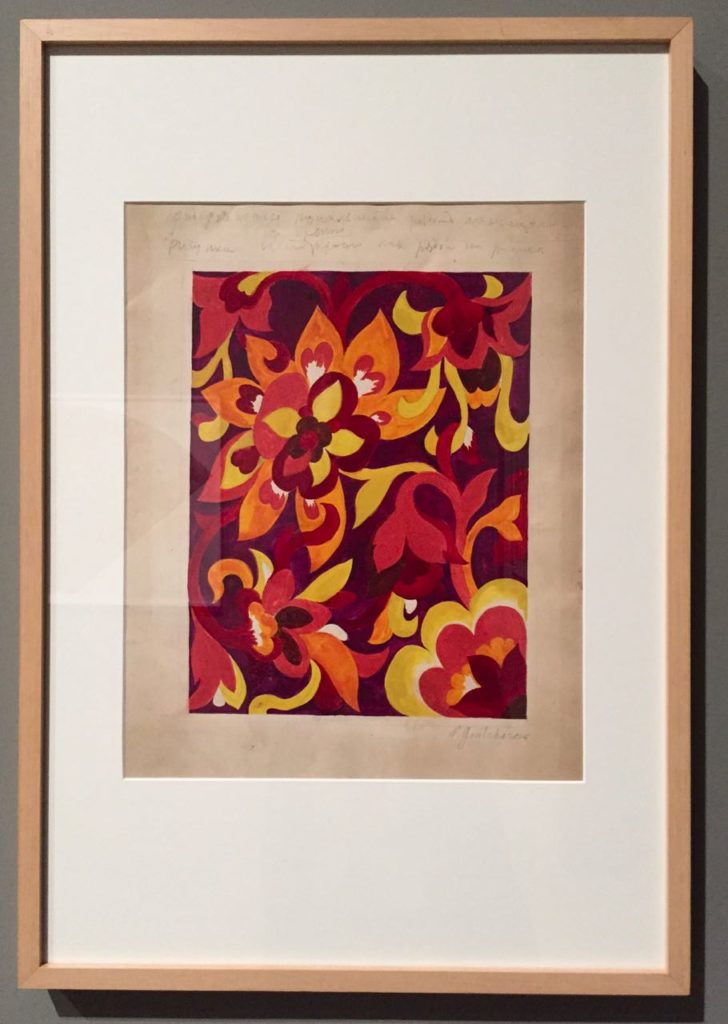
Design for House of Mirbor, 1922-28


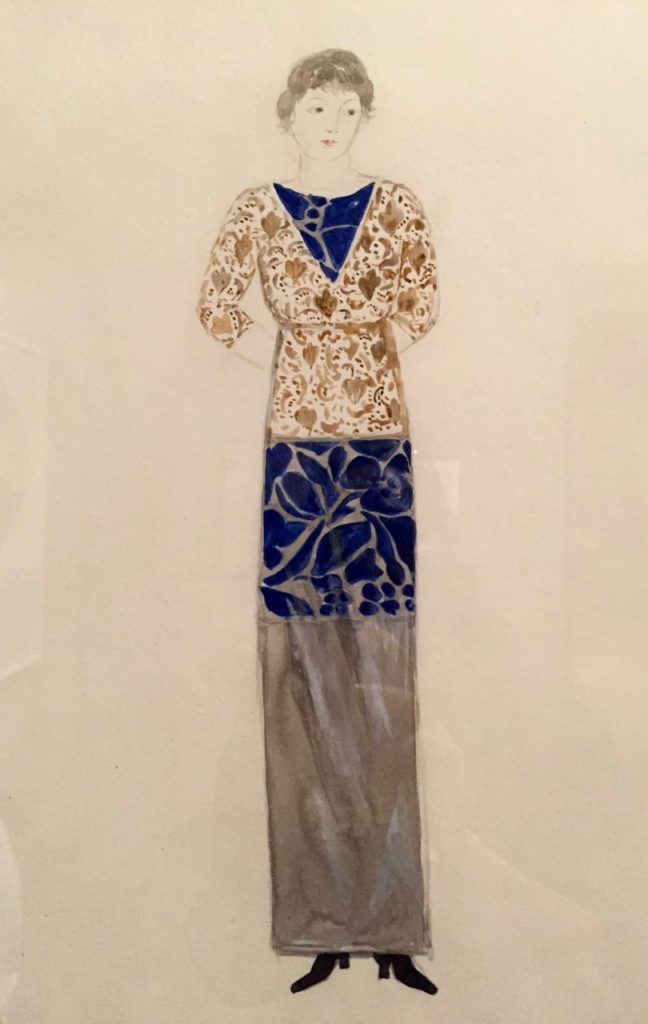
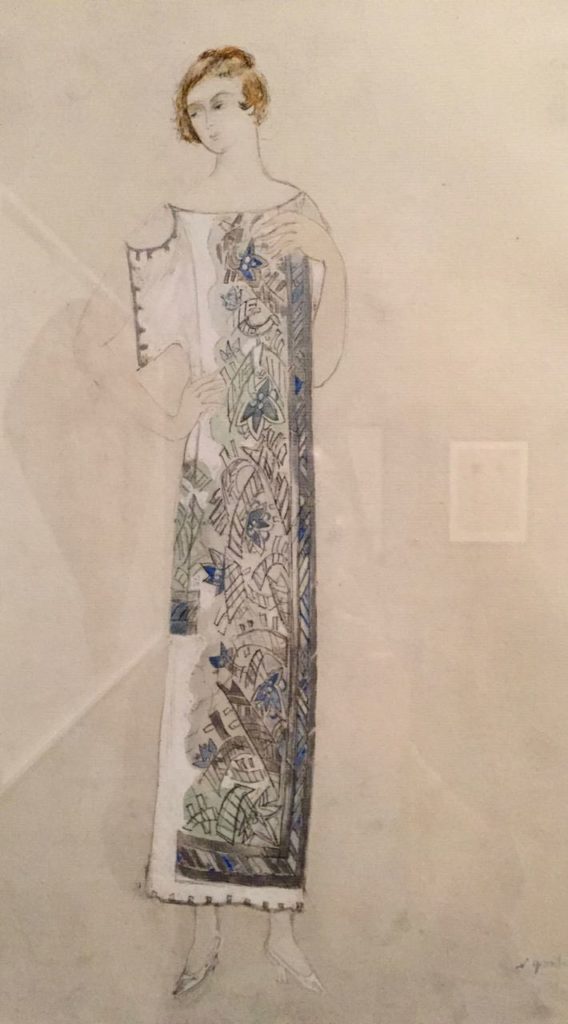
Design for « Algae » coat, House of Mirbor, 1927-28
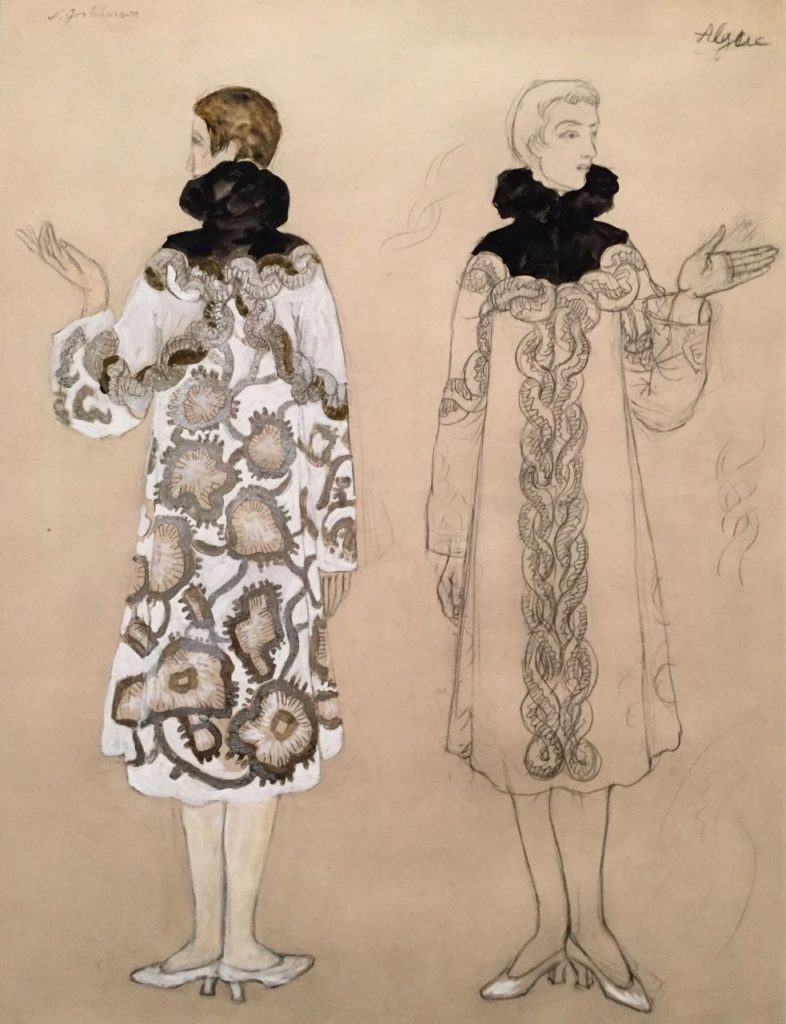
Natalia Goncharova’s icons where very rarely shown as the Russian society wouldn’t come to terms with the facts that they where painted by a woman

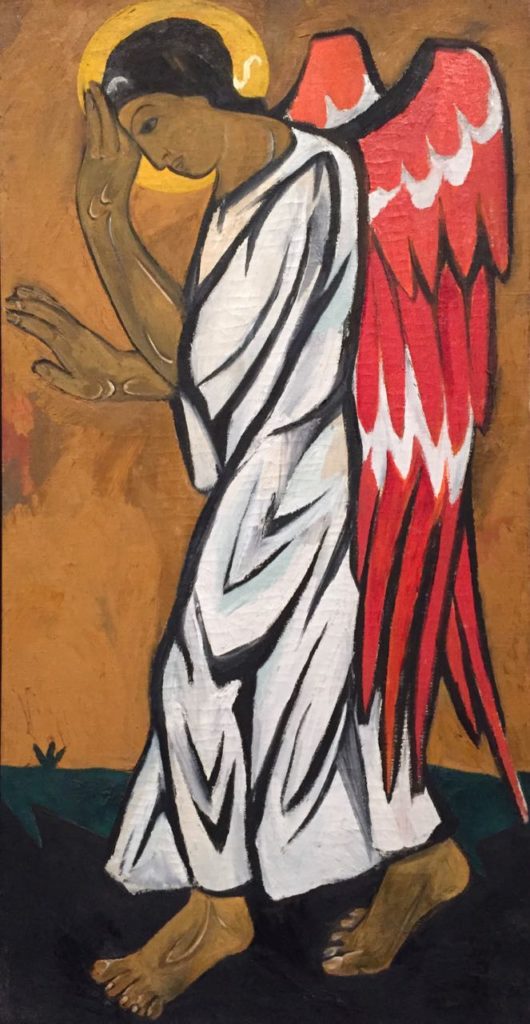

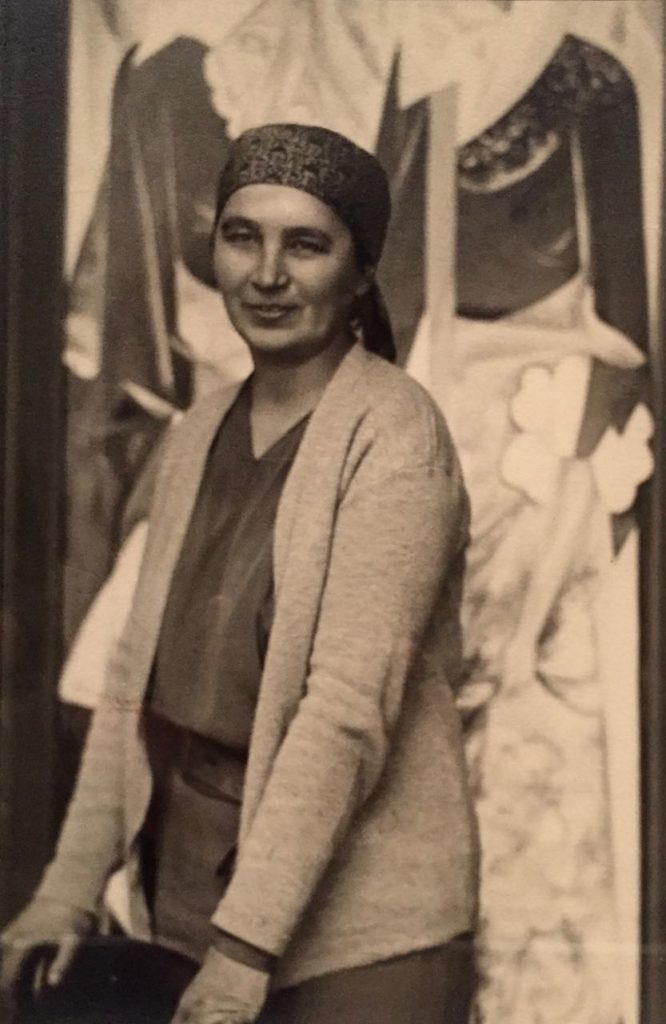
Linen, 1913
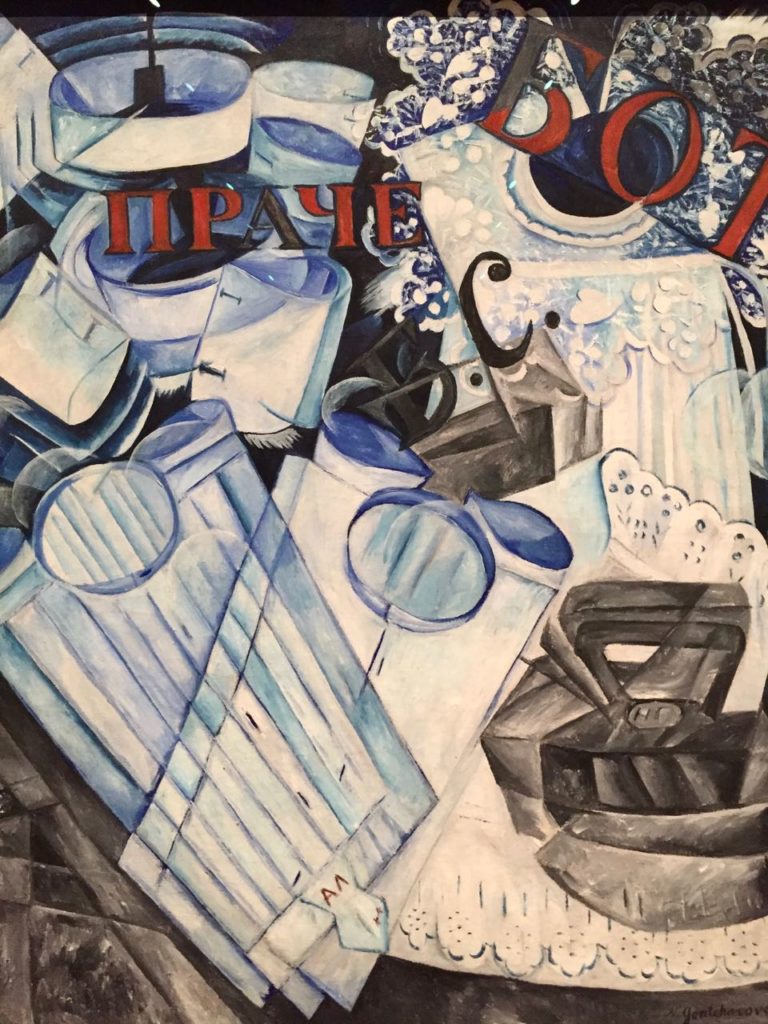
Dynamo machine, 1913
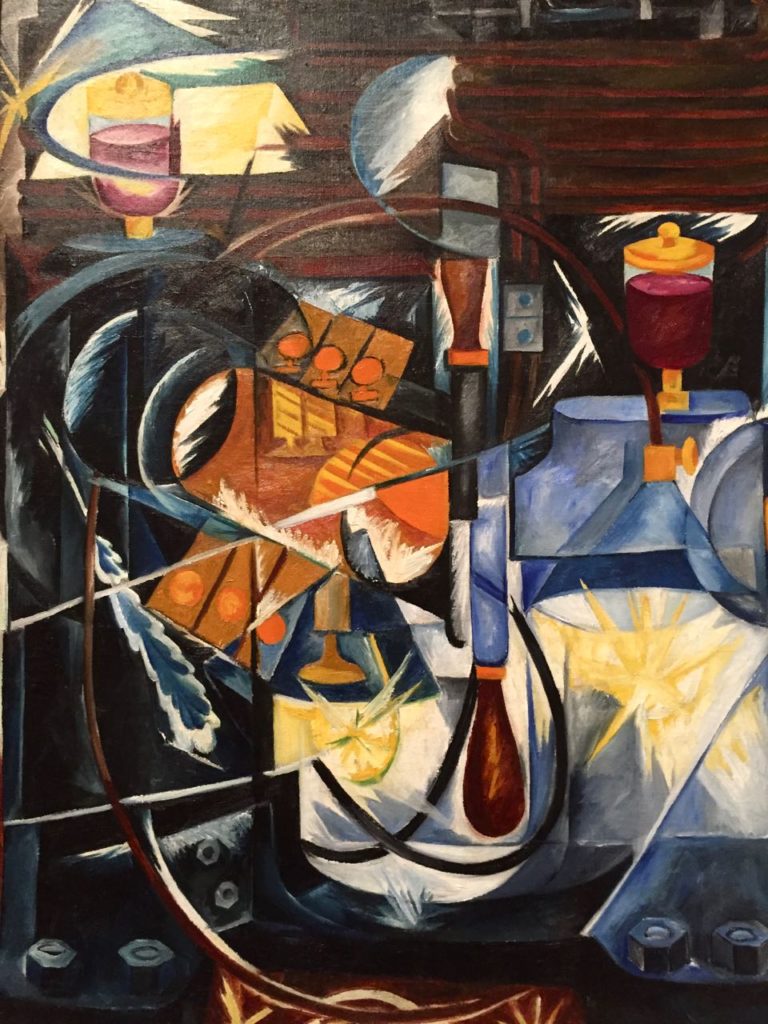
Cyclist, 1913

Spanish woman
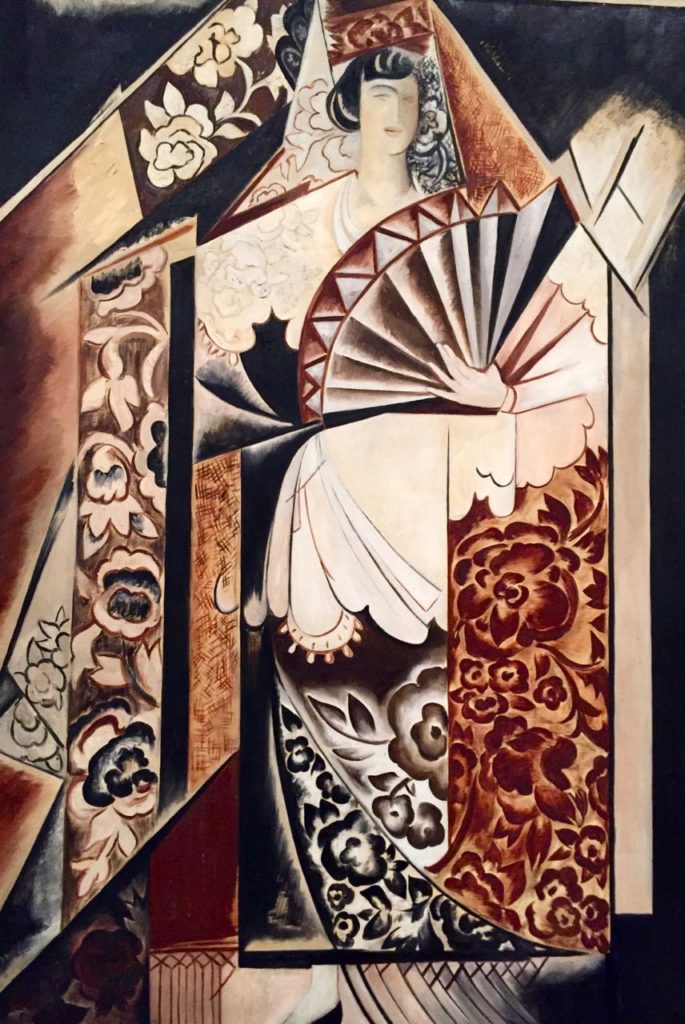
Composition with factory chimneys, set design for « Les noces »
